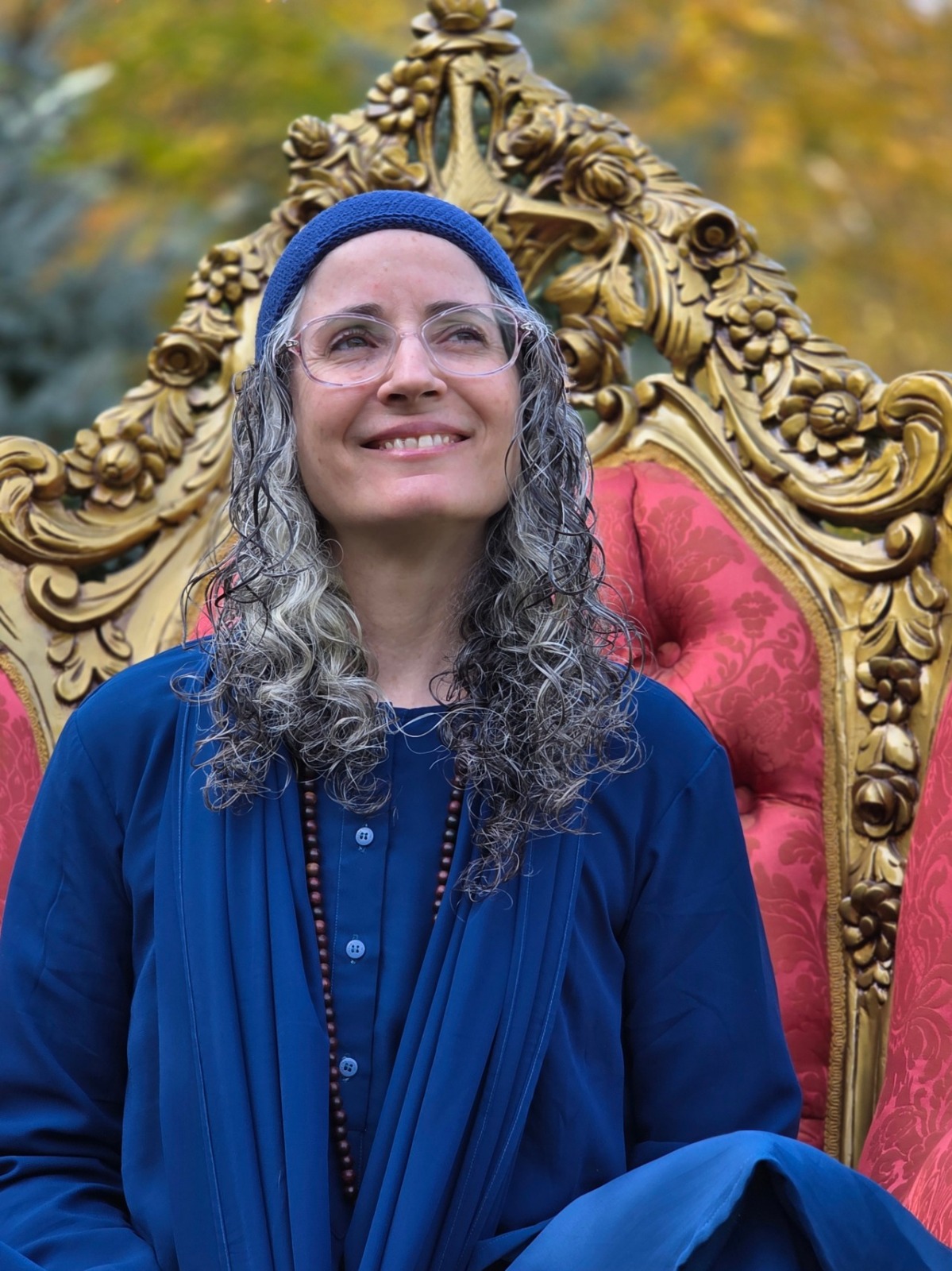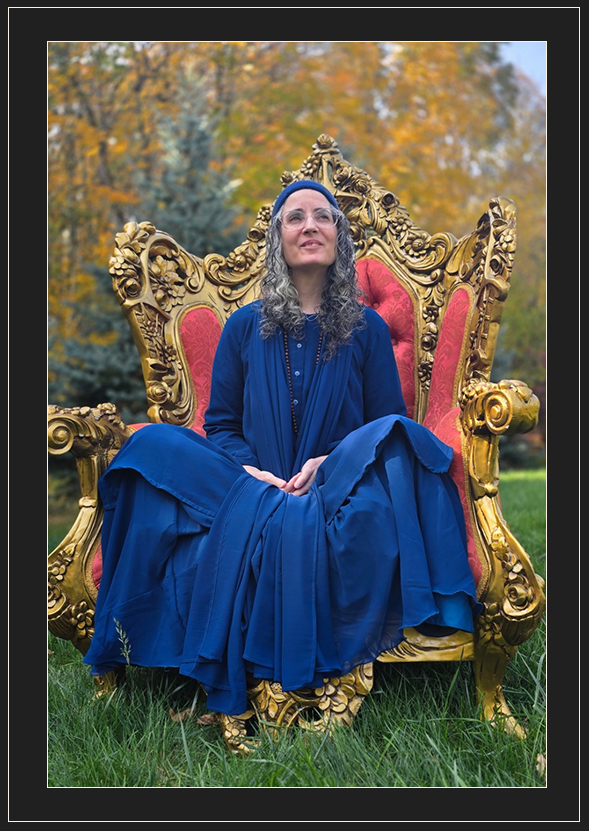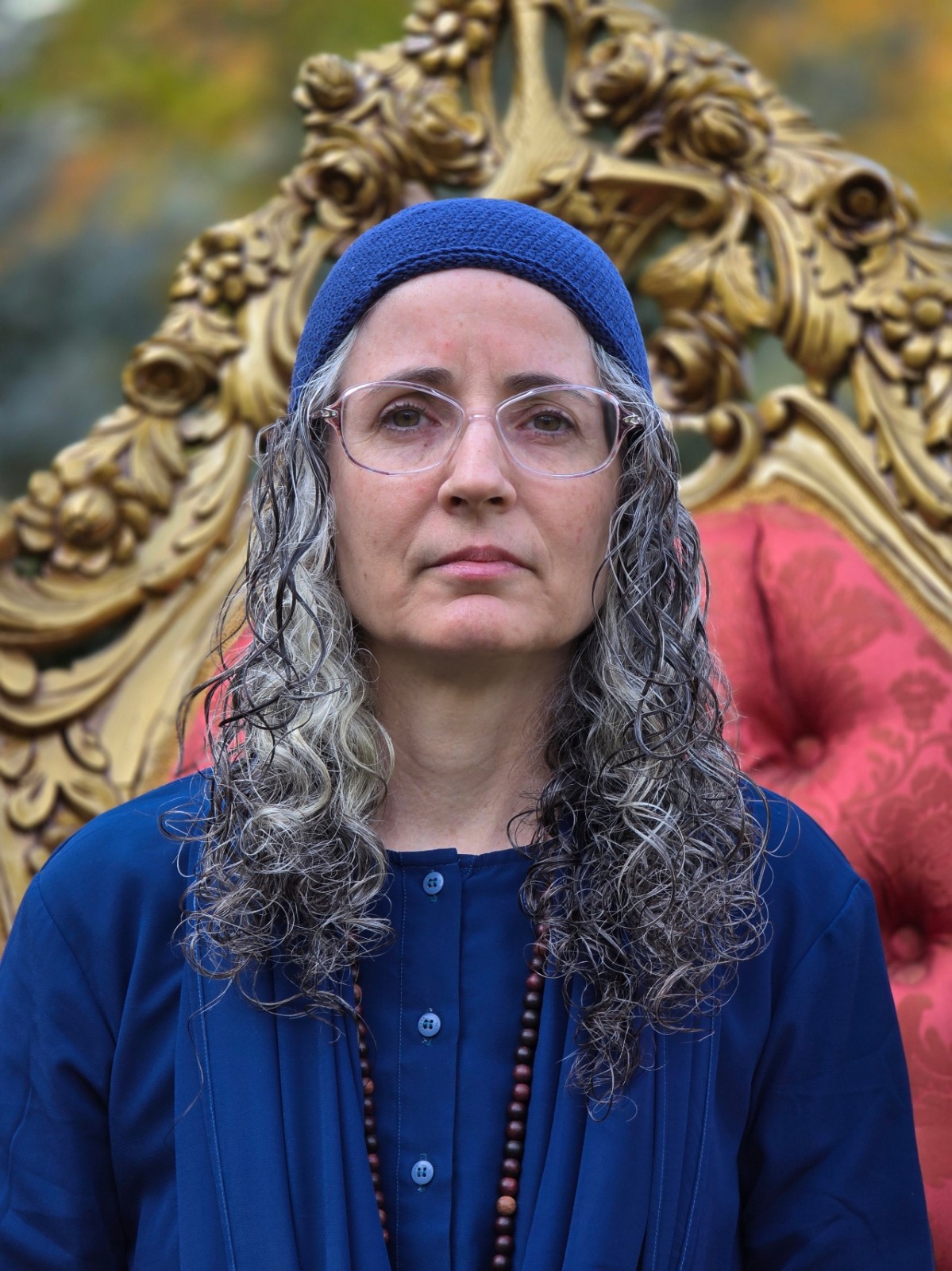
Gurumata, H.D.G. Avadhutika Bhaktivedanta Yogacharya Srimati Premananda Mataji Maharani
Gurumata was born on November 5, 1974, in Haifa, Israel. From an early age, she showed a natural inclination for attentive observation and for living with simplicity. During adolescence, she became interested in painting and photography—pursuits she later left behind but which taught her patience, precision, and attention to detail, qualities she would eventually bring to her spiritual quest.
In May 1995, she met Prabhuji, asked to become his disciple, and after several months was formally initiated. From that moment, her training became comprehensive. Under the direct guidance of her Master, she systematically studied and practiced the various branches of yoga: the discipline of Haṭha Yoga to stabilize the body and breath; the contemplation of Rāja Yoga to educate the mind; the discernment of Jñāna Yoga to inquire into the nature of the self; the devotion of Bhakti Yoga to open the heart; Karma Yoga as selfless service; as well as the methods of Kriyā Yoga and the energetic approach of Kuṇḍalinī Yoga—always within the framework of the lineage, and with an attitude of responsibility and sobriety. These practices were never treated as isolated compartments, but as facets of a single process of maturation. In 1997, the awakening of the Kuṇḍalinī began, manifesting through episodes of loss of consciousness and mystical experiences.
In parallel, and always within the course of study guided by Prabhuji, Gurumata delved into a wide spectrum of religions and philosophies. She explored the sources of Vedānta and Sāṅkhya, the spirit of nondual Tantra, the legacy of Buddhism in its various schools, the tradition of Christian mysticism, the Sufi path, Western philosophy, and other currents of comparative thought. She did not accumulate labels; rather, she contrasted ideas with daily practice, verifying what truly led to greater lucidity, responsibility, and compassion. Her erudition took shape through listening, asking honest questions, studying original texts when appropriate, and, above all, testing what she learned in direct experience.
More than thirty years have passed in study and life in the presence of her Master. That time forged a sober character: less need to speak, more readiness to serve; less concern with appearances, more focus on the essential. The continuity of practice taught her to distinguish between what is important and what is incidental, and to maintain simple habits that sustain clarity: an orderly day, regular silence, attention to the breath, precise speech, and timely action.
In 2022, she chose to adopt the eremitic life, following her Guru’s example. She gave priority to silence, to a clear schedule, and to well-tended relationships. Her days became centered on a few essential activities: practice, study, steady work, and service. Solitude did not mean emotional detachment; it allowed her to be more available and more fully present whenever she was called upon.
In 2024, she received the grace of the fullness of awakening. She did not experience it as a spectacular event, but as the end of a long-standing confusion. She realized that there was nothing to add—and much to release. Since then, her way of accompanying others has been direct and concrete: if someone seeks certainty, she offers method; if comfort, she offers presence; if understanding, she proposes inner work. She favors a clear indication over a brilliant discourse, and sustainable practice over an extraordinary promise.
Today, as one of Prabhuji’s fully enlightened disciples, she has accepted the position of Master, serving both her Guru and the Prabhuji Mission from her elevated position.
Her authority arises from the coherence between what she studies, practices, and lives. She always refers to the source, to the lineage, and to daily discipline. She often emphasizes three essential tools: discipline—to repeat each day; discernment—to separate the essential from the accessory; and gratitude—to recognize that every genuine advancement is shared grace.
Her guidance is simple and concrete: observe everything that can be observed and dedicate daily time to silence and study. Over time, these habits consolidate a clearer mind, a softer heart, and a more available life for service. Those early passions for painting and photography fulfilled her formative role and were left behind; what remained alive was meditation—her attention wholly oriented toward inner life, continuous learning, and service.





